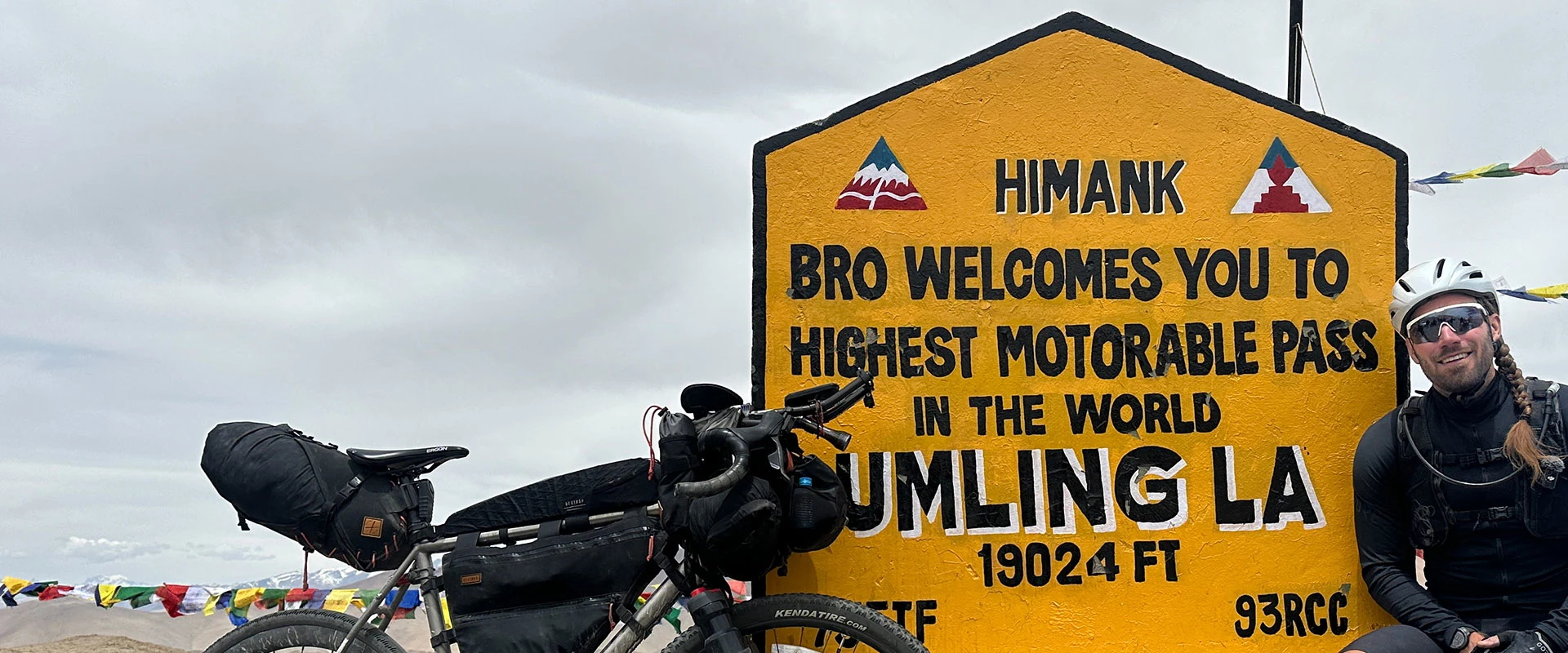
8.6.2025
Sea to Sky: James Benson-King's World-Record Ride
James Benson King is not one to back down from a challenge. A GOREWEAR athlete with a taste for adventure (and a dose of British charm), he took on one of the most extreme rides imaginable: cycling from sea level in Khambhat (0 m) to the world’s highest road, Umling La in India (5,800 m).
In June 2025, he completed the 2,100.33 km route—with 17,595 m of elevation gain—in 14 days, 4 hours, and 26 minutes, setting a new world record. Along the way, he faced intense heat, monsoon rains, and brutal climbs.
We caught up with James to hear what it was really like out there—physically, mentally, and everything in between.
What inspired you to cycle 2,000 km across India, and how did you prepare for such a massive journey?
In 2024, I supported my friend Michiel Desmet on his attempt to set a world record for handbiking at high altitude. His planned route spanned from Khambhat to Umling La, the world’s highest road. I was only able to support him for the first month, but I was hooked! The experience was unforgettable, and I knew I had to return. That’s when I realized no one had set a time for the same route on a standard bicycle—so I decided to come back and attempt it myself.
Preparation was both physical and mental. Physically, I trained on the bike or in the gym six times a week. I also did heat acclimation sessions to prepare for the Indian plains. But honestly, it’s the mental side that matters most. No matter how fit you are, there will be moments when your body wants to quit. In those moments, the mind takes over and pushes you through. I start these challenges knowing I will make it to the finish line—and so far, I haven’t been wrong.
Can you walk us through your route – where did you start, where did you finish, and what was your favorite place to ride through?
The ride started at sea level in the Gulf of Khambhat and finished at Umling La, 5,799 meters above sea level. The first half took me through Gujarat, Rajasthan, Haryana, and Punjab—flat, but brutally hot. Temperatures reached upwards of 45°C (113°F). I averaged 200–250 km a day for this section, starting early and resting during peak heat.
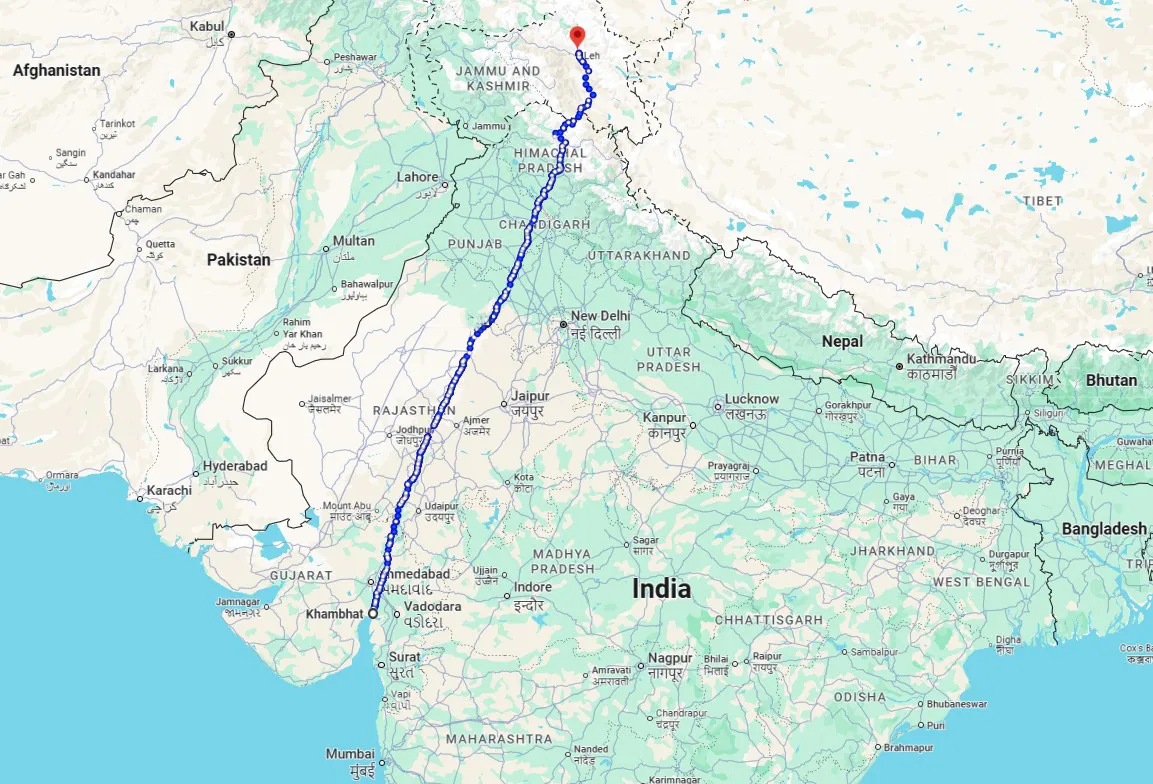
The second half climbed through Himachal Pradesh and into Ladakh. This section was otherworldly—with dry mountain deserts, winding climbs, and jaw-dropping Himalayan scenery. My favorite part was definitely the final few days through Ladakh and to the finish line. The silence, isolation, and surreal beauty made it unforgettable.
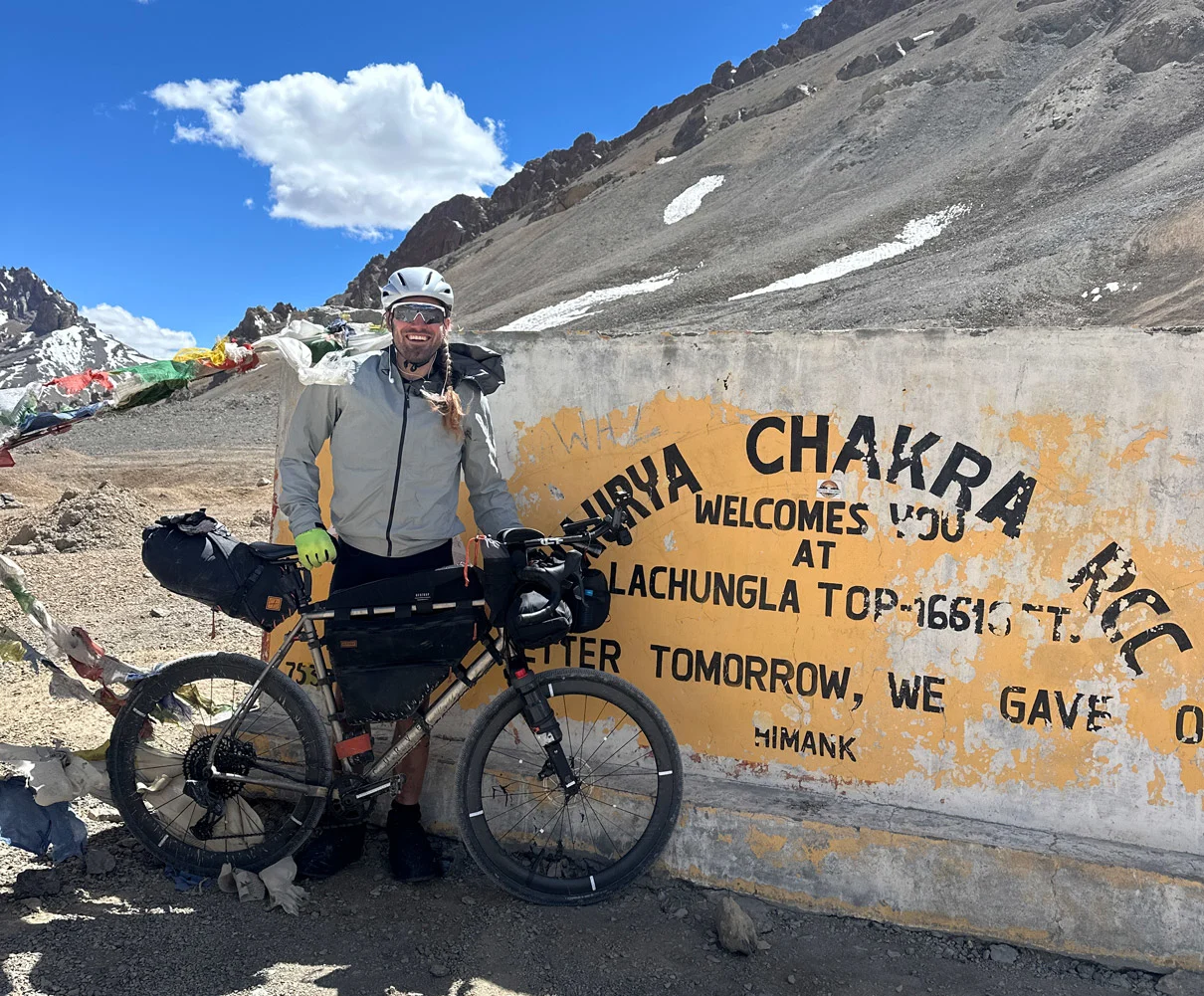
What were the biggest physical and mental challenges you faced during the 2,000 km ride?
The midday heat in the plains was crushing. Sometimes there was nowhere to rest, so I’d cycle in short bursts, then collapse into petrol stations or restaurants just to cool down. These bursts might be 45 minutes between towns, but by the time I arrived, I was overheating and in rough shape. Convincing myself to keep going was hard.
In the mountains, the challenge shifted. The 5,000m+ passes—with air so thin I could barely pedal—became the real test. The final two climbs were probably the most demanding. I was either so tired, or the air was so thin, that I could only ride 500 meters before needing to rest. When I started again, my legs burned from lactic acid buildup, and mentally, I had to dig deeper than ever before. When I finally reached the finish line, I collapsed in a heap.
Which moment during the ride was the most unforgettable?
The penultimate climb before Umling La was the most unforgettable. It was the first time I truly felt alone—and I had the Himalayas all to myself. The off-road climb, the stunning scenery, and the fact that my body was completely broken made it surreal. But there’s something about those moments, when your mind takes over, that makes it even more incredible. I was in a flow state, just pushing forward.
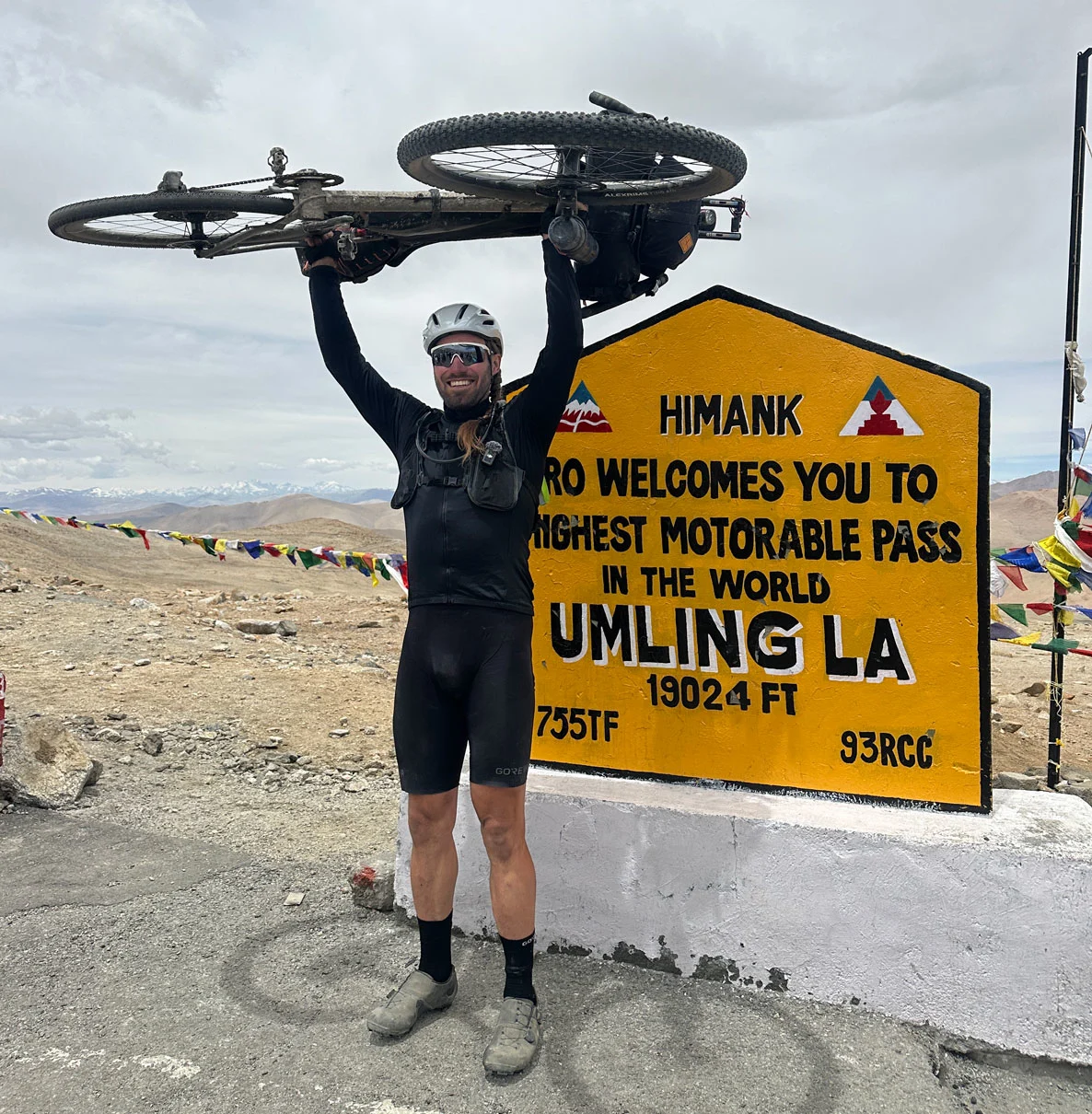
What did you eat to fuel your body during this long ride, especially through different regions of India?
Nutrition was a mix of planning and chaos! In the plains, it was so hot I was constantly rehydrating, but I couldn’t eat much during the hottest part of the day. For breakfast, I’d try to find oats and bananas the night before, which I’d eat around 4 a.m. I snacked on high-carb biscuits and gels until about 9 a.m., when it got too hot to eat. For lunch, I’d stop for a few hours and try to find some plain local food—rice, chapatis, naan, potatoes, eggs, etc. I love spicy food, but didn’t want to risk it! I’d then push on until evening, snacking if I got hungry, and finish with a big dinner—either a local thali or a burger/pizza if I could find one.
In the mountains, I was hungrier since the heat eased up, but food was harder to come by. Eggs, chow mein, and fried rice were the only things available at the small roadside tea houses. I had stocked up on gels and sweets for the tough moments, but otherwise, I ate whatever was available. Overall, my approach was intuitive: eat when I could, drink when I could, and trust my body.
Did you meet any interesting people or encounter any surprising acts of kindness along the way?
India is full of generosity. From people offering chai or shelter to strangers cheering me on from the roadside, I felt supported every step of the way. It’s moments like these that remind you how important human connection is—even when there’s a language barrier.
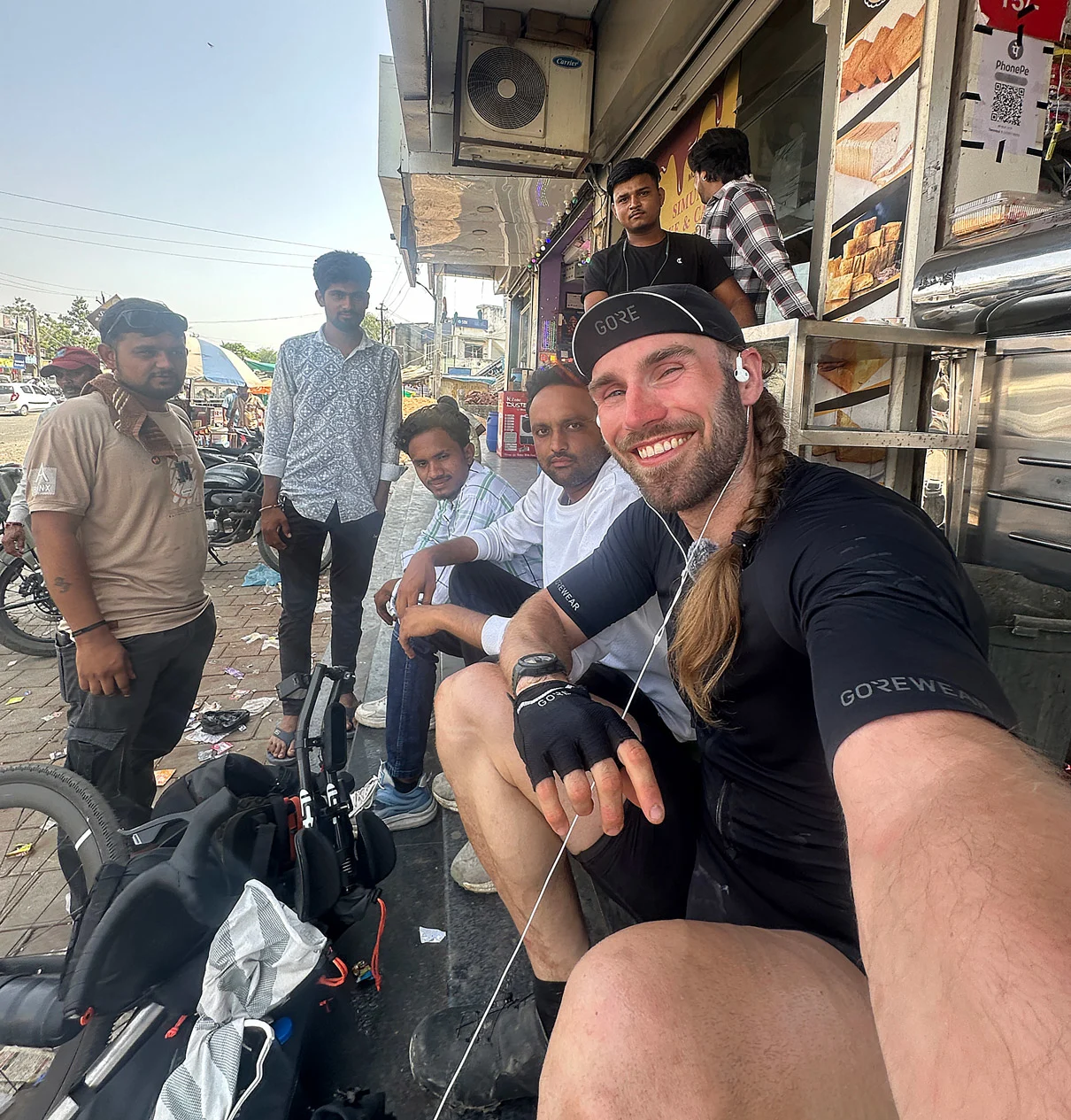
The biggest act of kindness happened in Mahe. Around 9 p.m., a policeman at a checkpoint told me it was too dangerous to keep riding. The only building nearby was a restaurant that refused to let me stay. I was about to set up my bivy sack when the policeman offered me his bed for the night. He said he’d sleep in his tent and wouldn’t let me take his place. It was incredibly kind—and I got a great night’s sleep ahead of the penultimate day!
What gear and bike did you use, and what would you recommend for someone planning a similar ride?
I used my Curve Cycling GXR (aka Kevin!). It’s a titanium adventure gravel bike optimized for both speed and comfort—perfect for bikepacking trips and ultra races. The drivetrain had the ideal gear ratio to power through the plains and still handle the climbs.
I kept things light with Restrap saddle, frame, toptube, and handlebar bags. That helped with the climbs, and comfort features like a suspension stem and aerobars made long hours bearable. The Distance jersey and Distance bib shorts I took with me were incredible—they stayed comfortable throughout the whole two weeks, which made a huge difference day after day.
For anyone planning a ride like this, I’d say comfort is more important than performance. You’ll be living on the bike—make sure it feels like home.
How did your body transform over the course of the 2,000 km — physically, mentally, or emotionally?
Physically, I grew stronger—but I lost weight drastically. I couldn’t eat enough or get enough protein to sustain myself and ended up losing 6 kg over two weeks. Mentally, this challenge really helped me gain confidence and resilience. Initially, the ride and record were just part of a film project—an idea I had. But as I pushed on, I realized I was capable of more. By the end, I was really proud of the time I achieved, and it all came down to mental strength. Emotionally, I have no idea how I transformed—but when I hit that finish line, there was a big outpouring of emotion. I have 10 minutes of footage of me bawling my eyes out to prove it!
Were there any unexpected problems — flat tires, injuries, or weather challenges — and how did you deal with them?
The biggest challenges were environmental—extreme heat in the plains and altitude in the mountains. Fortunately, no flat tires or injuries—until the final climb! I had some bike issues: my brake pads couldn’t handle the heat from the descents, and I had several broken spokes. In total, this cost me about three days and was a huge mental hurdle, especially after such a strong first week. I got through it by just keeping forward momentum. I tried not to dwell on time lost or worry about what else might go wrong—instead, I just focused on turning the pedals.
How did this ride change your outlook on life, discipline, or adventure?
Honestly, it helped me realize this is my passion now. I’ve always been a jack of all trades and never really great at one thing. But this trip showed me not only that I love endurance riding and bike travel—but also that I want to help others plan their own trips. Pushing myself mentally and physically—that’s the kind of adventure that shows you what you’re really capable of.
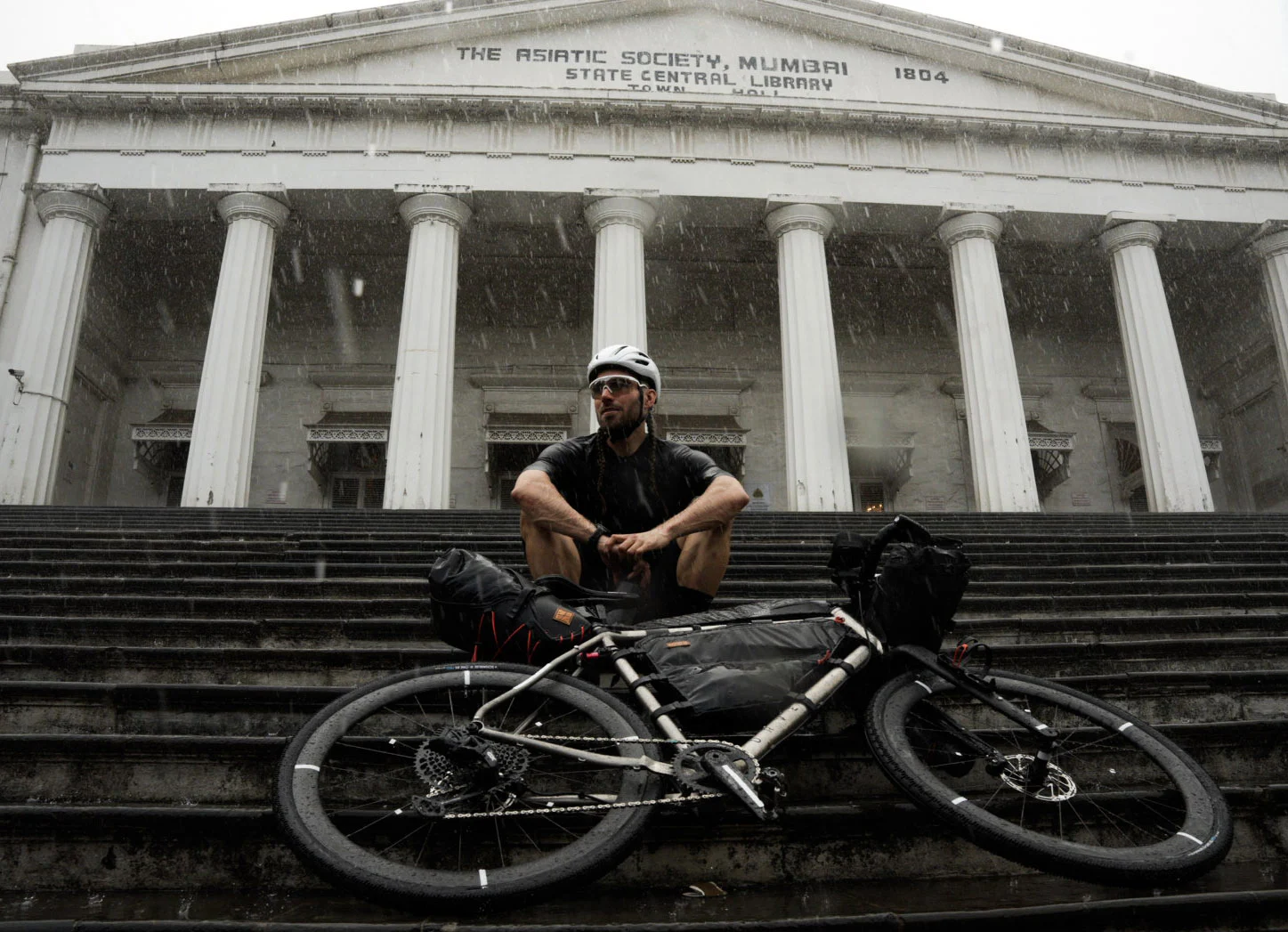
What advice would you give to someone dreaming of doing their own cycling expedition across India?
India as a cycling destination is incredibly rewarding—and incredibly testing. I’ve never been anywhere like it.
My advice on gear: just go with what you have. Don’t worry about having everything perfect—you just have to be willing to try. Physically, make sure you do some heat acclimation so the weather doesn’t hit you like a train! Mentally, prepare to be pushed. India is amazing—the kindness, the landscapes, the culture—it’s all out there waiting for you. And if you need advice, reach out. I’m always happy to help someone start their journey.
What’s next for you — any future cycling expeditions or endurance challenges planned?
I’m about to start the VIA Race—a 4,000 km race across Europe. That will wrap up my summer. Then, my focus shifts to Antarctica. I’m currently planning an attempt to cycle across it—a world first—and I’ll be supporting my favorite charity, Cardiac Risk in the Young. It’ll be a lot colder than India, but I’m excited to take on the challenge and push myself once again.
Latest Cycling Stories
